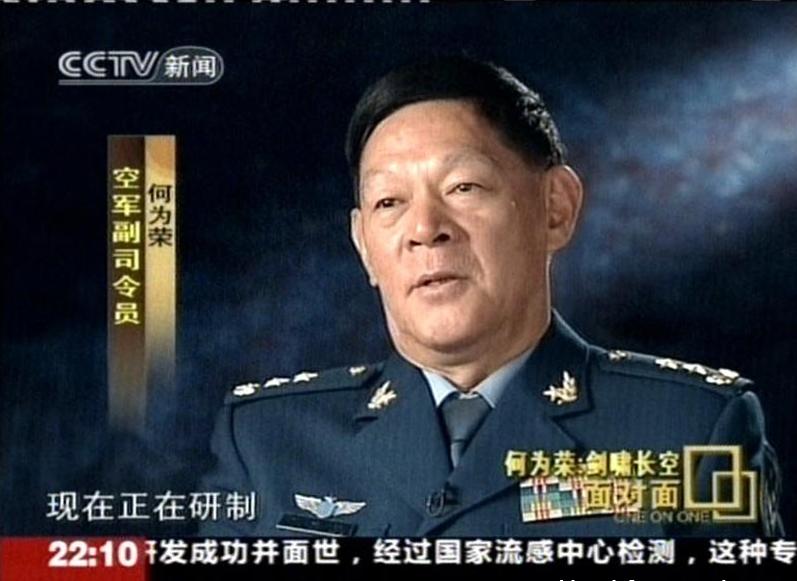
China’s Fifth-Generation Fighters and the Changing Strategic Balance
Publication: China Brief Volume: 9 Issue: 23
By:

On November 9, General He Weirong, deputy commander of the People’s Liberation Army Air Force (PLAAF), confirmed long-standing speculations that the PLAAF is developing fifth-generation fighters (fourth-generation in Chinese standard), which may be in service within 8 to 10 years, and certainly by 2020. During an interview with state-owned China Central Television (CCTV) two days ahead of the 60th anniversary of the PLAAF on November 11, Deputy Commander He announced that the next-generation fighter would soon undergo its first flight, closely followed by flight trials (Xinhua News Agency, November 9). The senior military officer’s disclosure reflects the considerable progress that the PLAAF has made in force modernization, which has exceeded Western expectations in terms of the pace of development and the capabilities of its defense industrial base. While China remains several steps behind the United States in operationalizing its advanced fighter jets, the PLA’s rapid military modernization has raised concerns among U.S. allies in the region that the military balance is beginning to tilt toward China’s favor.
In an interview with Global Times, PLAAF Commander Xu Qiliang stated, “superiority in space and in air would mean, to a certain extent, superiority over the land and the oceans” (Global Times, November 2), thereby highlighting the PLAAF’s position in Chinese military planning. At an event commemorating the PLAAF’s 60th anniversary, President Hu Jintao heralded a “new chapter” in the development of the PLAAF (Global Times, November 10).
China’s fifth-generation fighters will reportedly have 4S capabilities: stealth, super cruise, super maneuverability and short take-off. According to Air Force Colonel Dai Xu, “its most striking characteristic is the capability of invisibility, which also could be called low detectability” (Global Times, November 10). The U.S. F-22 Raptor serves as the gold standard of fifth-generation fighters, which is currently the only fifth-generation fighter in service among all the world’s armed forces. According to General He’s interview, Chengdu Aircraft, the country’s leading fighter manufacturer, is reportedly developing the fighter with Shenyang Aircraft (Xinhua News Agency, November 9).
General He’s startling revelation that the next-generation fighter may be in service by 2020 stands in stark contrast to the Chinese habit of closely guarding its military capabilities, yet consistent with a recent trend that reflects the Chinese Armed Force’s growing confidence in its military strength. During an interview with the official Xinhua News Agency back in September, Defense Minister Liang Guanglie proclaimed that, "Our [China’s] capabilities in waging defensive combat under modern conditions have taken a quantum leap … It could be said that China has basically all the kinds of equipment possessed by Western countries, much of which reaches or approaches advanced world standards" (Xinhua News Agency, September 21),
Indeed, an ongoing survey conducted by Global Times among its Chinese users revealed some telling observations about how they perceive China’s security environment and PLA airpower. The short four-question survey asks the respondents questions ranging from where they think the biggest security threat to China in the future will come from to how they rate China’s airpower and what type of air force should be developed in the future. The first question, which asks how respondents view China’s security environment, 46 percent of the 9,335 who answered said that they think the biggest security threat to China comes from the sea, while 43 percent responded that it is airborne. The second question asked respondents to rate China’s air force, and 50.8 percent rated the Chinese Air Force as average, while 44.9 percent rated it as weak. The third question asked respondents what kind of airforce China should develop, and an overwhelming majority, 75.3 percent, responded that China ought to develop a strategic air force capable of covering the entire globe. The final question asks respondents where China should place its emphasis with regard to air force development, and the majority—47.6 percent—responded that China’s air force should develop a space-based combat unit (satellites, space weapons, etc.), while 21.3 percent responded that China’s emphasis should be placed on developing large airlift platforms (strategic bombers and cargo aircraft, etc.) (Survey.huanqiu.com, November 17).
In light of China’s rapid air force modernization, Japan is increasingly concerned about Chinese regional air superiority. A Kyodo News report cited by the Global Times quoted Andrei Chang, editor-in-chief of the Canada-based Kanwa Defense Review Monthly, as saying that the PLAAF currently has 280 J-11s, whose combat performance is comparable to Japan’s Air Self Defense Forces’ 200 F-15s, and 140 J-10s, which are a match for the F-16s. According to a Japanese military source, "even though [Japan] has a disadvantage in numbers at the moment, but combined with its airborne early warning and control system Japan can win in terms of quality." Yet, the source cautioned that, "once China deploys its AEWC [KJ-2000, which were on display at the October 1 National Day Parade] … Japan’s air superiority will gradually diminish" (China Daily, November 11; Global Times, November 12).





